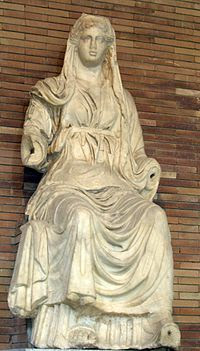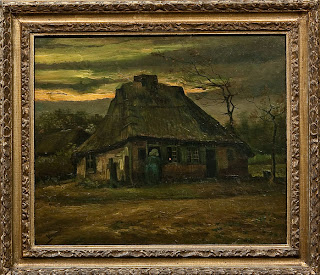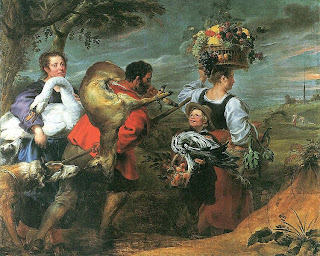COME OUT WHEREVER YOU ARE: THE MUTATION OF THE SHADOW
In the last Post I presented some ideas concerning the Social Background of the Fairy Tale; I cast some doubt upon the general assumption regarding the height of the Giant; finally, I mentioned the codes of Angl-Saxon justice
In th
Now it is time to explore the various ARCHETYPES in the Fairy Tale. I shall spend some considerable time examining the maneuverings of the SHADOW and CRUCIALLY WHAT HAPPENS IN THE STORY WHEN THE SHADOW TRANSMUTES.
Right, off we go. Let us begin with the ARCHETYPE OF THE MOTHER. Right at the outset I must state that I am NOT RIGIDLY interpreting the ARCHETYPES. As you will see I am deliberately FLEXIBLE in their interpretation. I take this position because, I think such an approach allows a deeper insight into the story and shows how people change under various circumstances and pressures.
We have established previously that the MOTHER ARCHETYPE relates to Nurturing, Caring, Training, Providing for and Protecting the young. So the ideal MOTHER ARCHETYPE would have these attributes in perfect balance. She would teach and train her offspring with Love and Kindness, yet where discipline is required it would be administered fairly and properly. In short, her offspring would know the role of the Mother. But is this the ARCHETYPAL pattern we see in Jack’s Mother?

CERES THE ROMAN GODDESS: THE PERFECT MOTHER ARCHETYPE
It seems that this is not the case. Her offspring, young Jack, is described as her “only child … whom she INDULGED to a fault”. The origin of the word, ‘indulged’ throws some light on Jack’s Mother. In the early 17th century the word took on the meaning of treating one with EXCESSIVE kindness. It comes from the Latin word, “indulgere”, which has the sense of ‘giving free rein” to something. So, although Jack’s Mother had PROTECTED his life when she fled with him from the Giant, and had tried to bring him up, NURTURING him, as best she could, even attempting to sell her cow to keep them alive.
Incidentally, the COW is also AN ARCHETYPE. The cow is at the point of sale, their only means of sustenance. Notice the cow goes to the Butcher, so like the classic Scapegoat its life is going to be taken so that the family can live on. The COW is a very important ARCHETYPE throughout the world, both ancient and modern. For example in Ancient Egypt the Goddess Nut is associated with the cow. Hathor, also was worshipped by the Egyptians as a cow-deity. In this role she was considered the great nurturer and sustainer of everything. As a nourisher the Cow appears in Norse mythology, in Vedic literature, and to this day considered to be India’s most sacred animal. It well depicts this role in our story. Just a word on the Butcher, before reverting to Jack and the Mother. The Butcher well personifies the TRICKSTER. Look how he sets out deliberately to cheat Jack

JACK SETS OFF TO MARKET WITH THE COW
“The Butcher held some curious beans in his hat; they were of various colours and ATTRACTED JACK’S NOTICE. This did not pass unnoticed by the Butcher; who knowing Jack’s temperament thought it was now time TO TAKE ADVANTAGE OF IT, and determined not to let slip so good an OPPORTUNITY….. the SILLY BOY” deceived by the sly Butcher “the cow was exchanged for a few paltry beans.”
Going back to Jack’s Mother, once he had grown past childhood, she ABDICATED her role. Her role as the ARCHETYPAL MOTHER was subordinated to something else. The SHADOW surfaced in her personality. The end result was that Jack, ‘did not pay the least attention to anything she said, but was indolent, careless, and extravagant.’
Let me isolate one or two of the elements attributable to the SHADOW, which had surfaced within her personality. If you need to, look back at the Previous Posts to see my interpretation of this ARCHETYPE. Jack’s Mother became a WORRIER, often coming to tears, because of Jack’s idleness and their increasing poverty. She becomes afflicted with RAGES, one example is her throwing the Beans out of the window in anger, ‘she kicked the beans away in a passion,’ and then retreating to bed without any supper. But that is not all. She becomes ILL through the anxiety vibrations generated by the SHADOW. This occurred after Jack’s disappearance up the Beanstalk for the second time. When he returns with the bags of gold his Mother recovers. But what happens to the MOTHER ARCHETYPE? Does it reappear? I shall return to that point after I have discussed the ARCHETYPAL elements within Jack.
When the story opens Jack seems to be dominated by the vibrations of the SHADOW. Any normal, appreciative son would do what he could to ease the burden on his Mother. But as I have pointed out he takes the opposite attitude, being completely disobedient, ‘indolent and extravagent’.
Jack becomes the HERO ARCHETYPE in spite of himself: it is thrust upon him. We learn later that the wizened old woman, the Fairy influenced the whole drama, without Jack’s being aware of it. She is obviously a HELPER ARCHETYPE and she tells Jack when they meet on the road to the Giant’s house:
The day on which you met the Butcher as you went to sell your Mother’s cow, my power was restored. It was I who secretly prompted you to take the beans in exchange for the cow. By my power the Beanstalk grew to so great a height and formed a ladder. I need not add that I inspired you with a strong desire to ascend the ladder.
How she did this is not explained. One wonders HOW the INSPIRATION was achieved: because the fairy is an ARCHETYPE, and so is Jack, is she operating WITHIN his psyche? If so, how did she maneuvre the Butcher into position and cause the Beanstalk to grow? I am sure you will be able to work this one out.
 JACK DESCENDING THE BEANSTALK PURSUED BY THE GIANT A ROMANTIC VIEW
JACK DESCENDING THE BEANSTALK PURSUED BY THE GIANT A ROMANTIC VIEW
There is no doubt that Jack subordinates THE SHADOW and takes on the role of the HERO ARCHETYPE. This is abundantly clear when we see how he braves the threat of death when entering the Giant’s lair; we see this manifested when he creeps out of hiding on more than one occasion and seizes, the hen, the bags of gold, and the harp. It surely took enormous courage to snatch these objects from under the Monster’s nose and then flee out of the Giant’s lair, run down the Beanstalk, hurriedly chop it down whilst the Giant is in hot pursuit and watch the ogre plunge to his death.
There is no doubt about it Jack successfully TRANSMUTES THE SHADOW. When?
We first notice the glimmer of a change when he intends for the first time to ascend the Beanstalk to ‘seek his fortune’. The MUTATION deepens when, after climbing the Beanstalk he sits down exhausted on a stone and he then thinks of his Mother ‘and reflected with sorrow on his disobedience in climbing the beanstalk.’ Yes, Jack is beginning to change the SHADOW is being transmuted. He is FACING IT, not rationalizing it away.
But he will go deeper yet and produce profound effects within the story. Once Jack meets the Fairy on the road and she recounts the misfortune the Giant brought upon Jack and his Mother, once she tells him of the courage his Mother displayed in pleading for his life and eventually hiding him safely away, once Jack learns all of this the TRANSMUTATION is almost complete. We see how he braves danger after danger and in EVERY instance gives to his mother the proceeds of his dangerous undertakings. His EXTRAVAGANCE has gone.
Look at his statement of REPENTENCE and the evidence that the SHADOW within has been TRANSMUTED. He gives his Mother the hen and then says:
I have brought home that which will quickly make YOU rich without any trouble: I hope I have made you some amends for the affliction I have caused you through my idleness, extravagence, and folly.
Once Jack had TRANSMUTED THE SHADOW within himself it had several effects. First, he and his Mother became very rich, and after he had successfully killed the Giant, and promised ‘to be dutifully obedient to her in the future’, his Mother’ whole personality changes; so does hers. She TRANSMUTES THE SHADOW and he and his mother ‘lived together a great many years and continued to be very happy.’
This would seem like the end of the discussion, but not so. There are one or two other elements that need to be explored in relation to the SHADOW.
Let us go back into the Giant’s domain. I want to suggest that the Giant is – if not specifically – the SHADOW of Jack’s father. This is not to say that he is part of the father’s psyche, rather he is the DARKNESS corresponding to the light of Jack’s father. As we shall see the entire psyche of the Giant corresponds to the SHADOW.
But before I develop this further. I would like to comment – NOT dogmatically – that the tumbledown Cottage that Jack and his Mother lived in BEFORE Jack and she TRANSMUTED the SHADOW within their natures, may well be the SHADOW aspect of either their former home, or at a stretch, the Giant’s house with its ‘large hall magnificently furnished’ and several other “spacious rooms all in the same style of grandeur”. Now, we need to go back to the Giant.

INSIDE A PALATIAL HOUSE OF THE PERIOD BY CONTRAST WITH THE RUN-DOWN STATE OF JACK'S COTTAGE.
As far as the Giant is concerned there is not a single redeeming feature. He is totally manipulated by the vibrations of the SHADOW within his psyche. What is of interest is that once Jack faces up to the Giant it is as if he is FACING THE SHADOW. As a result the MUTATION of the SHADOW within his own nature takes place.
Now, what makes us believe that the Giant was all SHADOW. Let us look at the catalogue of his behaviour.
When Jack, after climbing the Beanstalk, he is told by the Fairy that the Giant was,
As wicked as your father was good; he was in his heart envious, covetous and cruel; but he had the art of concealing these vices …. and wished to enrich himself at any rate.
He was also a liar, and a calculating murderer, deceiving Jack’s father into taking him in and then plotting to kill his benefactor. This he does along with the Porter and the Nurse. Even though he allows Jack and his mother to slip away, but later the Giant ‘repented that he had suffered her to escape.’ He then proceeds to burn down the familiy’s ancestral property.
He is also a cannibal, having a dungeon within his house to keep the prisoners whom he will later eat. He even treats his wife in a despicable manner: not only does he have her running around, waiting on him hand and foot, he also ‘frequently lifted up his hand to strike his wife for not being quick enough’. Truly, he was a ‘very ill-tempered and impatient’ individual. For good measure he ‘was continually upbraiding her with the loss of the hen’ which Jack had stolen.
THE GIANT DEMANDING HIS DINNER
Much more could be said about this PERSONIFICATION OF THE SHADOW but the narrative sums it up perfectly: Jack intends to steal the Harp because, ‘the Giant’s SOUL was not ATTUNED to harmony.’ He had to die.
When the Giant is killed, the SHADOW vibrations have ceased in the Fairy Tale. When this has occurred both Jack and his Mother become perfectly attuned: the SHADOW has been TRANSMUTED. It is of interest that once this TRANSMUTATION has taken place the Fairy appears both to Jack and his Mother. He Fairy explains the drama behind the Beanstalk and once this explanation had been given, ‘Jack was now fully cleared in the opinion of his Mother.’
So in these two Posts I have tried to show that there are many levels on which Fairy Tales such as this one can be understood. They have endured for centuries and been found all over the world because of one simple fact: they are replete with ARCHETYPES, and these ARCHETYPES are part of our own Nature. Consequently, when we are reading Fairy Tales, we are in some ways looking at ourselves.
I hope you have enjoyed this Post even though much more could have been said. If the discussion has served as a stimulus in some way, then the purpose has been fulfilled.
In the next Post I shall return to ‘The Paranormal in Victorian Literature’ and examine Thomas Hardy’s ‘The Withered Arm’ and ‘The Return of the Native.’
Any Comments
Picture Credits Wikipedia Commons
Source : “The History of Jack and the Beanstalk’, Tabart, London 1807











